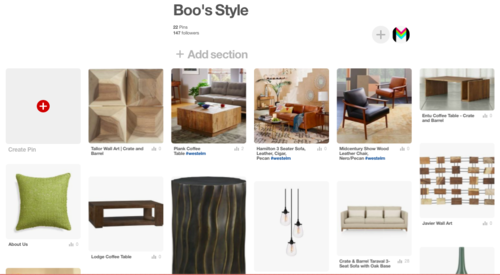Decorating For Couples: Tips for Finding Common Ground
Moving in together is a big step. As cute and romantic (and sometimes scary) as this step may be, we want to suggest a few tips to help with the decorating process of it. How do you make a compromise with your significant other so they won’t hold on to that one thing you absolutely despise? How do you try and get your dream of having a velvet blue couch in the living room when they are not into it? We've all heard how the secret to a great relationship is communication, and that factor definitely plays a role when designing a new space for the two of you. Communication is key to finding the right balance and design when merging into a new space with your love.
Image: Mackenzie Collier Interiors
With Valentine's Day around the corner, we decided to dedicate this post to design tips that will help you combine styles with your boo to create a functional space that represents the both of you! There is always common ground between even the most widely differing styles. The key is finding it before you cause a breakup...
Pinterest is your mutual bestie.
Get to pinning. Both of you create a Pinterest board and pin every design-related thing you like: your favorite bathroom designs, living room furniture, bedroom lighting, art, color palettes—anything and everything you like, pin! Get ideas flowing so you have some concrete ideas of what you do and don't like.
Share your ideas.
Time to hear each other out. Compare your boards and (nicely) point out what you like and don't like about both of them. Look at the mood boards side by side; there HAVE to be common elements. Find them. (White walls? Good lighting? A certain color?) Make a list of what you have in common. Create a third mood or Pinterest board that shows only the items/qualities/features you both agree on. Maybe there's enough to go on with this? If not, expand on the things you have in common to find new ideas that are cohesive with what you both agree on. If you are creative enough, you'll find them without having to duke it out. Remember, this space has to express both of you guys—so be open! The more open you are, the fewer arguments you’ll have.
Image: James Stewart for Mackenzie Collier Interiors
Be considerate.
For all the items you don't agree on, priority should go to the person who spends the most time in a given room. For example, if the closest thing you do to cooking is putting your Postmates order on a plate, but your partner is a part-time chef at home, then you probably shouldn’t have the first pick on all kitchen decisions. Whoever spends the most time in a certain space should get a final say on decisions involving that area. That seems fair, right?
Image: Heather Kirchhofer for Mackenzie Collier Interiors
Need a tiebreaker?
Still can’t decide on what should be done in the dining room? Let the architecture of your space be the final judge. There are certain color schemes, furniture shapes, etc. that just suit a specific architectural type. Research your space and the architecture associated with it and look at what works best. When in doubt, ask an Interior Designer!






